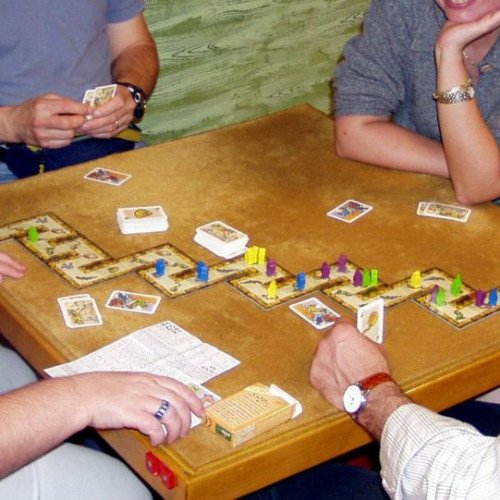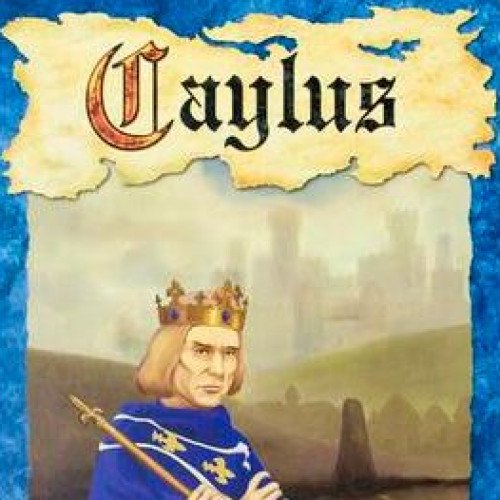"CARTAGENA" vs "CAYLUS"

CARTAGENA
Cartagena is a German-style board game released in 2000, that takes as its theme the 1672 pirate-led jailbreak from the dreaded fortress of Cartagena. With its very simple concept, this game of strategy gives each player a group of six pirates and the objective is to have all six escape through the tortuous underground passage that connects the fortress to the port, where a sloop is waiting for them. The first player to move all of his or her pirates from the Cartagena prison to the sloop is the winner. The game board and its pieces were designed by Leo Colovini and drawn by artists Christoph Clasen, Claus Stephan, Didier Guiserix, Martin Hoffmann, and Studio Tapiro. The board itself is made up of six double-sided sections, each of which has a different permutation of the same six pictures: daggers, pirate hats, pistols, bottles of rum, skulls, and skeleton keys. These six sections can be combined in any order, to make thousands of different games (although nowhere near as many as the 7206 combinations theoretically possible). Each player is dealt six cards out of a set of 102: 17 cards for each of the six pictures. Each also begins the game with six pirates, represented by solid-coloured, wooden figures. Colour choices include brown, red, yellow, green, and blue. The player who looks most like a pirate goes first, with gameplay proceeding in a clockwise direction.
Statistics for this Xoptio

CAYLUS
Caylus is a strategy oriented, German-style board game designed by William Attia and independently published in 2005 by Ystari in France and England, and Rio Grande Games in North America. Caylus has a mix of building, producing, planning, and bargaining — without direct conflict or dice-rolling mechanics. A card-game version, Caylus Magna Carta, was published in 2007, as well as a limited premium version of the game, with redesigned medieval-styled artwork and metallic coins. An iOS version of the game was launched in 2012. The goal of Caylus is to amass the most prestige points by constructing buildings and by working on the castle of Caylus in medieval France. Caylus does not include the random elements found in many board games, such as cards and dice. The only exceptions to this are the placement of the six neutral buildings (leading to 720 possible starting configurations) and the initial turn order, both of which are determined randomly at the beginning of the game. However, the effect of random initial turn order is minimal because players whose turn is later start off with a higher amount of money. Caylus initially gained public acclaim when it was rated the number one game of the October 2005 game fair in Essen, Germany by a public vote conducted by Fairplay Magazine. It quickly rose to become one of the most discussed and top-rated games on BoardGameGeek, a popular online board gaming forum. Caylus also received the Trictrac d'or 2005 award from the eponymous French boardgame website. With the international attention gained via BoardGameGeek and Essen 2005, the first printing of Caylus sold out in December 2005. A second printing was released in February 2006, including new cardboard coins to replace the gray plastic tiddlywinks-style coins from the original release. The second edition also includes the jeweler as a standard stone building tile (it was previously a promotional tile) and numerous graphic design changes to clarify certain rules. Although Caylus was not nominated for the 2006 Spiel des Jahres, the jury awarded it a special prize (Sonderpreis Komplexes Spiel) for the best complex game of 2006. Caylus won first prize in the 2006 Deutscher Spiele Preis and Nederlandse Spellenprijs, and won the 2006 Golden Geek Awards for Best Game and Best Gamer's Game.